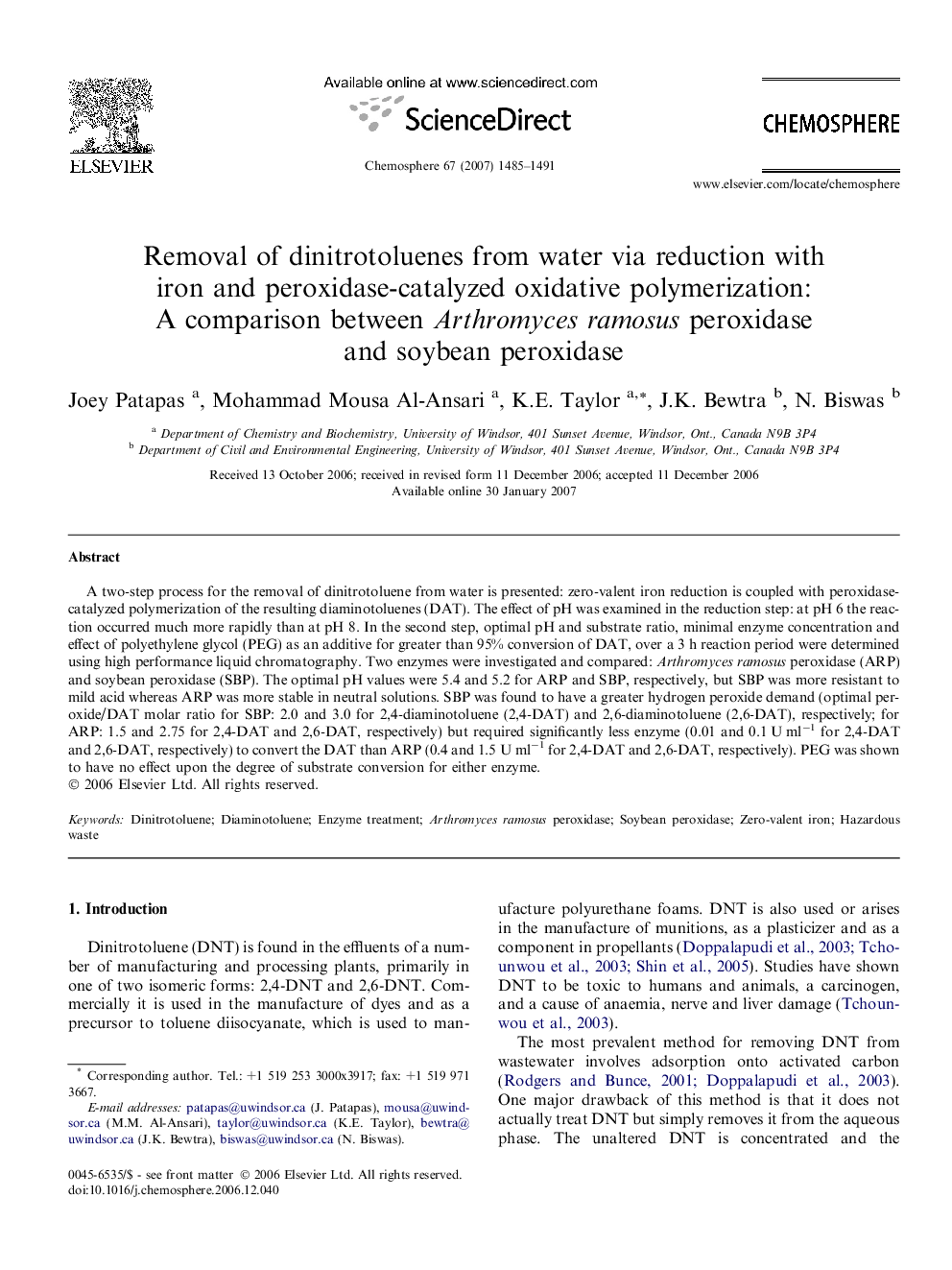| Article ID | Journal | Published Year | Pages | File Type |
|---|---|---|---|---|
| 4415840 | Chemosphere | 2007 | 7 Pages |
A two-step process for the removal of dinitrotoluene from water is presented: zero-valent iron reduction is coupled with peroxidase-catalyzed polymerization of the resulting diaminotoluenes (DAT). The effect of pH was examined in the reduction step: at pH 6 the reaction occurred much more rapidly than at pH 8. In the second step, optimal pH and substrate ratio, minimal enzyme concentration and effect of polyethylene glycol (PEG) as an additive for greater than 95% conversion of DAT, over a 3 h reaction period were determined using high performance liquid chromatography. Two enzymes were investigated and compared: Arthromyces ramosus peroxidase (ARP) and soybean peroxidase (SBP). The optimal pH values were 5.4 and 5.2 for ARP and SBP, respectively, but SBP was more resistant to mild acid whereas ARP was more stable in neutral solutions. SBP was found to have a greater hydrogen peroxide demand (optimal peroxide/DAT molar ratio for SBP: 2.0 and 3.0 for 2,4-diaminotoluene (2,4-DAT) and 2,6-diaminotoluene (2,6-DAT), respectively; for ARP: 1.5 and 2.75 for 2,4-DAT and 2,6-DAT, respectively) but required significantly less enzyme (0.01 and 0.1 U ml−1 for 2,4-DAT and 2,6-DAT, respectively) to convert the DAT than ARP (0.4 and 1.5 U ml−1 for 2,4-DAT and 2,6-DAT, respectively). PEG was shown to have no effect upon the degree of substrate conversion for either enzyme.
